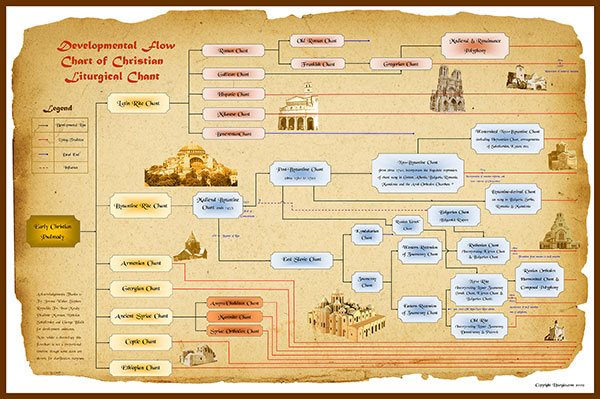Welcome
The history and development of liturgical music in the Judeo-Christian tradition is a complicated and wondrous thing. Beginning with ancient musical forms, it not only incorporated and wove various cultural threads into its being, but eventually developed into the most complex and beautiful form then known: Byzantine chant in the east. Corresponding developments were progressing in the west that led to Gregorian chant.

Interestingly, liturgical worship began with Jewish synagogue and temple worship, and followed a similar developmental path closely related to music. Historically Christian worship was always understood to be a “sung service.” That is, the music is the vehicle for the prayer. Yes, arrangers strove to create aural beauty, and they did, but it was always in the service of worship and of being a vehicle for prayer. If a single reference summarizes this approach, it would be Psalm 141, sung daily at Vespers (Esperinos):
Lord, I call upon Thee, hear me. Hear me, O Lord.
Let my prayer arise in Thy sight as incense.
And let the lifting up of my hands be an evening sacrifice.
Hear me, O Lord.
(Psalm 141:1-2)
Explore our site. You’ll find over 60 articles in the Liturgics section, describing the history and development of liturgical music and liturgical worship in the Judeo-Christian tradition.
Thank you for visiting!